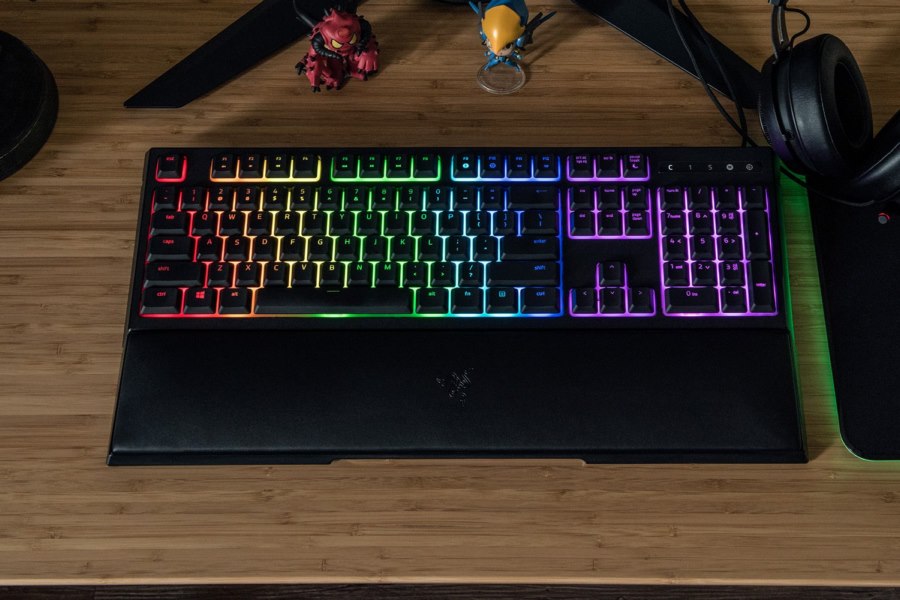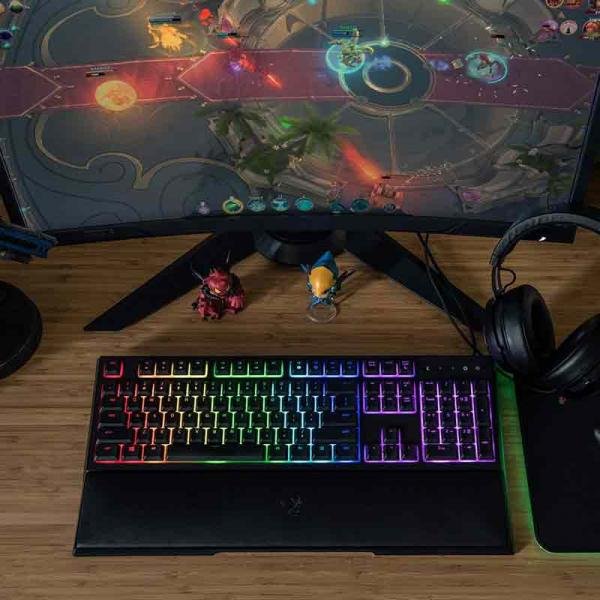

Razer’s goal here was not merely to create a gussied-up membrane keyboard: These actually are switches that you can remove from their sockets, and they have a click, just like Blue switches or Razer’s Green switches (but no tactile bump). (One could argue that Topre and Romer-G switches already serve that very market, but, hey, options.) Blue Switch Lite? To hear Razer tell it, the company developed its Mecha-Membrane keyboard platform-and that’s really what it is, more than a “switch”-to serve consumers who prefer a softer, cushioney feel over what typical mechanical keyboards offer. What is up is that Razer, using its very own factory equipment, developed a not-quite-mechanical but allegedly-just-about-as-good-as-mechanical switch. But if you’re intimately familiar with mechanical switches, you’ll probably frown and furrow your brow and promptly pluck off a key cap to see what’s up. With Razer’s new "Mecha-Membrane" switches, built into the Ornata Chroma keyboard, though, you just might.
ORNATA CHROMA FULL
And if you want that tactile feel, you'll get a better value by going full mechanical.When I put my fingers on Cooler Master's "memchanical" MasterKeys Lite L, I noted that you would never mistake them for real mechanical switches. It's not as cheap as most membrane keyboards and doesn't have membrane's simple, bumpless travel. Great mechanical gaming keyboards are not just available at this price range-they're abundant.Īs much as I applaud Razer’s attempt to extend the utility of rubber dome by assimilating elements from mechanical switches, it just doesn't make sense for most gamers. So much so, in fact, that its price tag is in parity with midrange mechanical keyboards. Thanks to its novelty switch, it’s significantly more expensive than most membrane keyboards, where a low price is typically a big selling point. The 250MB installation size also feels unnecessarily bloated, but at least storage is cheap these days. The software's visual guides and animations create an intuitive environment, but they also makes transitioning between certain tabs a little laggy.
ORNATA CHROMA INSTALL
When you first plug in the Razer Ornata Chroma, you’ll be prompted to install the Razer Synapse software, which is a mandatory prerequisite if you want to record macros and program the Chroma lighting. And while it’s pretty much stark-naked in features besides programmable macros, it does come with a fantastic foam wrist rest suitable for kingly palms. Its chassis also boldly angles outwards at the base, accentuating its prestige by hogging an extra bit of desk space. As per its name, it leverages Razer’s dazzling Chroma RGB lighting system. Because pushing performance aside, the Ornata Chroma makes for a gorgeous showpiece. These problems were equally pronounced when I was typing, rather than gaming, and the heavy actuation force strained my hands after prolonged use. The harsh tactile point didn’t help its case, either the huge disparity in actuation force before and after the click felt very awkward. I was in a constant struggle between consciously ensuring that the keys were pressed and actually playing the game. Coming from a mechanical keyboard, the need to completely bottom out the switches also threw me off. When I took the Ornata Chroma through a few rounds of StarCraft, I had to put noticeably more effort than usual into pressing the keys. And the combined resistance of the rubber dome and the click mechanism makes the switch much stiffer than a standard rubber dome.Īll of these nagging faults affected the way I played during testing. Its lack of pre-travel before the click also renders keypresses abrupt and jarring.

In the case of the mecha-membrane, however, the switch only actuates when it’s bottomed out, which forces you to follow through with your keystrokes long after the tactile point.


 0 kommentar(er)
0 kommentar(er)
